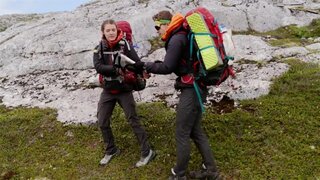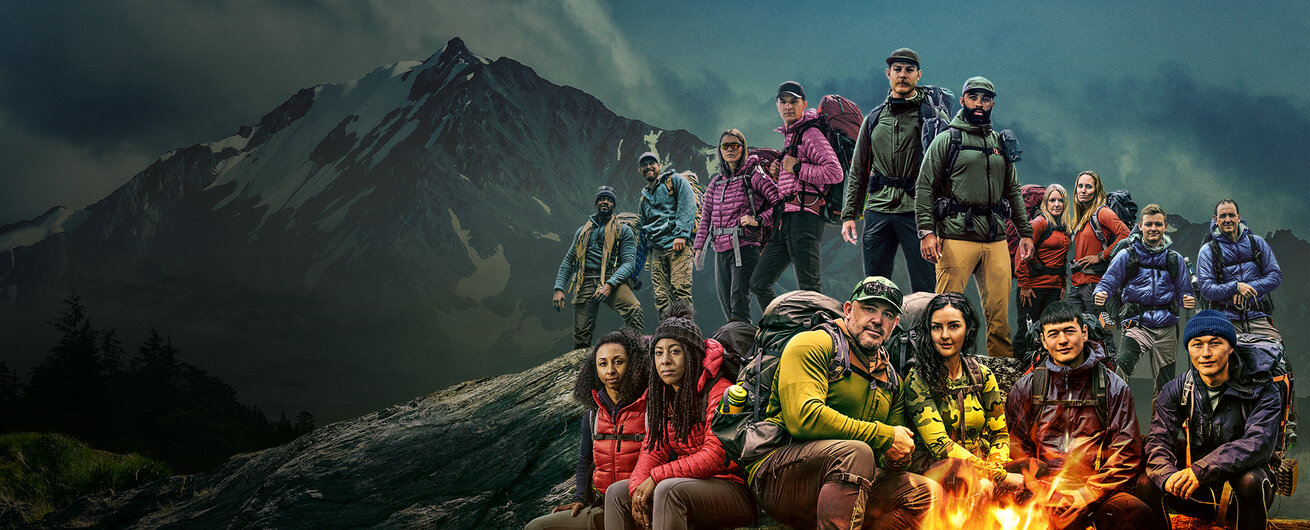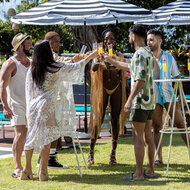Bella and Cason Discuss Their Key Alliance Strategy in Race to Survive: Alaska
The siblings worked closely with Hunter and Jeff, but who benefitted more?

Six episodes into Race to Survive: Alaska, and there's only been one alliance to manifest amongst the teams: Hunter and Jeff Leininger working with Bella and Cason Crane. There's something to be said about the bonds of family, and the fact that father/son dynamic of the former mixed with the sibling rapport of the latter has made for some smoother racing that has clearly benefitted the four. Granted, there's definitely been more on-camera bickering between Jeff and Hunter, which the Cranes have been able to weather with silence and some space.
But the Cranes told USA Insider they've been cognizant that being silent and watching things unfold along the legs has been their strength. Not butting in when Leiningers get heated or asking key questions of other teams about finding food sources during Survival Camp stays are all a part of their specific strategy in navigating all aspects of the competition.
RELATED: Why Max Djenohan Thinks 'Race to Survive: Alaska' Is Harder Than 'Naked and Afraid'
"Jeff and Hunter were super open with us from the beginning," Bella said of the formation of their alliance. "We liked them, which helped the relationship a lot. They were clearly well experienced with navigation, which to us was make or break for our race legs. Having that mentorship and guidance for the first few race legs was huge. And granted, we were watching them make mistakes, so even as we were working with them, we were catching on and learning for ourselves about being able to find flaws in their own reasoning. It was an interesting and very eye opening on both ends, with the navigation guidance experience, and also the ability to make mistakes. And how not working as a team contributed to their mistakes."
Cason also asserted that the Leiningers benefitted a lot from their alliance: "It might be very obvious in what we've seen so far that Bella and I were learning navigation from Jeff and from Hunter, which you see less of, but from both of them. But they would really have struggled without doing the food trades with us. And we were aware that we were helping them when we did those trades. It was a strategic decision, recognizing that we wanted their continued mentorship.
"I don't want people out there being like, 'Wow, Jeff is crazy to be showing Bella and Cason how to navigate!'" Cason continued. "He was doing that because Bella and I weren't just cultivating a friendship and companionship with them. But also, they couldn't trade their muscles and clams. The other teams refused them. The only team that would trade with them, was us."
However, Cason did concede that not much on the Race to Survive: Alaska legs was controllable. Good luck and happenstance were a big part of the competition too. "In my mind, the sequence of events and coincidences that led us to literally run into Jeff and Hunter in that first race leg that ultimately triggered a multi-race leg Alliance, so much of that was just luck and circumstance," he said. "I think both teams were very lucky that's the way it transpired because we both benefited in it. I don't know if it would have happened if it weren't in that organic coincidental way."
Tune into Race To Survive: Alaska every Monday at 11/10c on USA Network and catch more survival shows on Peacock now.



